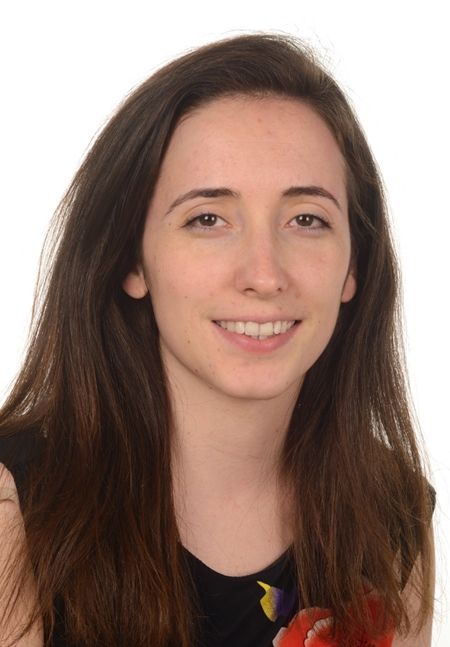 Abraham Lincoln
If given the truth, the people can be depended upon to meet any national crisis...
Abraham Lincoln
If given the truth, the people can be depended upon to meet any national crisis...
 Guildford news...
for Guildford people, brought to you by Guildford reporters - Guildford's own news service
Guildford news...
for Guildford people, brought to you by Guildford reporters - Guildford's own news service
Royal Surrey Clinical Scientist Wins Top Award
Published on: 20 Jul, 2017
Updated on: 24 Jul, 2017
A clinical scientist from Guildford’s Royal Surrey County Hospital has been recognised for her research into breast screening mammography.
Medical physicist Dr Lucy Warren is set to be awarded the BJR Barclay Medal for authoring an article which compared the risks and benefits of screening. Co-authors included Professor Kenneth Young and Professor David Dance.

Dr Lucy Warren was “shocked” to learn that she will receive the award.
Breast screening is performed using mammography, which produces an x-ray image of the breast and aims to detect cancer at an early stage.
The paper found that the number of lives saved as a result of breast cancer greatly outweighed the very small risk of harm from the radiation used to image the breast.
Dr Warren’s paper, published in the British Journal of Radiology (BJR), was aimed at fellow clinical scientists.
The BJR Barclay Medal was founded in 1952 and is awarded to the author whose contribution to the journal is not only a piece of original research, but is also deemed to be of special merit.
Dr Warren has worked at the Royal Surrey for the past seven and a half years and her post is funded by Cancer Research UK.
She is part of a research programme called OPTIMAM2, which aims to optimise breast imaging in order to improve cancer detection and characterisation in screening and diagnosis.
Dr Warren said she was shocked to learn she had been selected to receive the honour, which she will receive at the British Institute of Radiologists’ annual conference in November.
She said: “This research is important because there has been an abundance of new technologies developed in the last five to 10 years, during which breast screening has transitioned from film-screening to digital technology.
“Our research investigates the best way to use these technologies to improve the NHS Breast Screening Programme and will benefit the women who need this service.”
Dr Warren and the OPTIMAM2 team are now looking at how digital breast tomosynthesis can be used in breast screening. Unlike traditional mammography. that can only offer a two dimensional view, tomosynthesis uses a curved x-ray motion to build a three-dimensional picture of breast tissue.
Responses to Royal Surrey Clinical Scientist Wins Top Award
Leave a Comment Cancel replyPlease see our comments policy. All comments are moderated and may take time to appear.
Recent Articles
- Guildford Institute’s Crowdfunding Project for Accessible Toilet in its New Community and Wellbeing Centre
- Letter: Guildford – Another Opportunity Missed?
- Letter: GBC’s Corporate Strategy – Where Is the Ambition?
- My Memories of John Mayall at a Ground-breaking Gig in Guildford Nearly Six Decades Ago
- Westborough HMO Plans ‘Losing the Heart of the Street’ Says Resident
- College Invests to Boost Surrey’s Economy and Close Digital Skills Gap
- Community Lottery Brings Big Wins for Local Charities
- GBC Housing Plan Promises ‘A Vibrant Urban Neighbourhood’ Near Town Centre
- Hospital Pillows ‘Shortage’ at the Royal Surrey
- Updated: Caravans Set Up Camp at Ash Manor School


Recent Comments
- Ian Macpherson on Updated: Main Guildford to Godalming Road Closed Until August 1
- Sara Tokunaga on GBC Housing Plan Promises ‘A Vibrant Urban Neighbourhood’ Near Town Centre
- Michael Courtnage on Daily Mail Online Reports Guildford Has Highest-paid Council Officer
- Alan Judge on GBC Housing Plan Promises ‘A Vibrant Urban Neighbourhood’ Near Town Centre
- John Perkins on GBC Housing Plan Promises ‘A Vibrant Urban Neighbourhood’ Near Town Centre
- S Collins on GBC Housing Plan Promises ‘A Vibrant Urban Neighbourhood’ Near Town Centre
Search in Site
Media Gallery
Dragon Interview: Local Artist Leaves Her Mark At One of England’s Most Historic Buildings
January 21, 2023 / No Comment / Read MoreDragon Interview: Lib Dem Planning Chair: ‘Current Policy Doesn’t Work for Local People’
January 19, 2023 / No Comment / Read MoreA3 Tunnel in Guildford ‘Necessary’ for New Homes, Says Guildford’s MP
January 10, 2023 / No Comment / Read More‘Madness’ for London Road Scheme to Go Ahead Against ‘Huge Opposition’, Says SCC Leader
January 6, 2023 / No Comment / Read MoreCouncillor’s Son Starts Campaign for More Consultation on North Street Plan
December 30, 2022 / No Comment / Read MoreCounty Council Climbs Down Over London Road Works – Further ‘Engagement’ Period Announced
December 14, 2022 / No Comment / Read MoreDragon Interview: GBC Reaction to the Government’s Expected Decision to Relax Housing Targets
December 7, 2022 / No Comment / Read MoreHow Can Our Town Centre Businesses Recover? Watch the Shop Front Debate
May 18, 2020 / No Comment / Read More









Paul Nathan
July 21, 2017 at 12:28 pm
Good work. Well done! I always wondered about the risk due to the X-rays themselves. Reassuring to know it’s not significant.